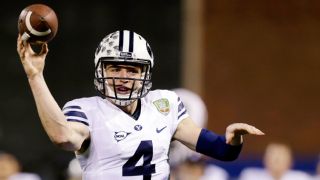|
With the NCAA Football Rules Committee tabling the controversial 10-second "slow play" rule proposal that was going to be discussed Thursday and voted on, many teams are breathing a sigh of relief. The proposal drew the ire of many coaches who have been stepping on the gas pedal of late, as up-tempo offenses have been favored by more and more teams each season. Based on our research, 92 teams snapped the ball more rapidly between plays in 2013 than they did in 2010, an average of 2.5 seconds per snap faster among all FBS teams. According to the proposal, a defensive unit would have been allowed to substitute within the first 10 seconds of the 40-second play clock, excluding the final two minutes of each half. Player safety has been cited as a primary reason for the proposed rule change, though no data had been produced to indicate the change would actually limit injuries. Combining time of possession, the distribution of a team's rush and pass attempts, and the frequency of clock-stoppage plays like incompletions and turnovers allowed us to produce a tempo rating for each team, the estimated real-time elapsed between the end of one play and the snap of the ball on the next play. Based on averages, these five teams operated the fastest in 2013 and are the most thankful that the proposed rule has been tabled.  BYU Cougars (19.8 seconds between snaps) The Cougars made tempo a major point of emphasis in the 2013 season and they also focused on distributing the football to more offensive weapons. BYU quarterbacks were responsible for 72.5 percent of the team's production in 2012, and last fall, first-time starting quarterback Taysom Hill accounted for only 66.7 percent of BYU's total offense. Their accelerated attack gave Hill many more opportunities to make plays with his arms or legs, and he ranked 10th nationally in yards per game (329.4) as a result.
|


